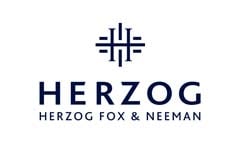Founders, Before You Grant Equity, Read This! The Dos and Don’ts of Equity Compensation
Equity-based compensation has become a cornerstone of employee incentive strategies, particularly in the tech industry. As a result, the design and tax planning of such plans are especially critical. Getting it right means allowing the employee to maximize value without exceeding the bounds set by Israeli income tax law. Knowing the dos and don’ts will help you avoid unpleasant surprises with the Israeli Tax Authority.
The most common framework for granting equity to employees is Section 102 of the Israeli Income Tax Ordinance [New Version] 5721-1961, specifically the capital gains route. This route allows startups to offer options or shares through a trustee, with potential tax advantages. If certain conditions are met, including a minimum holding period of 24 months, employees may be taxed on exit at the 25% capital gains rate, instead of higher rates on employment income.
The challenge, of course, is that eligibility depends on proper structuring and strict compliance with the income tax rules. Mistakes in documentation, timing, or plan approval can lead to full marginal tax rates and employer tax exposure. The challenge has grown even greater since January 1, 2025, when the ITA replaced its manual reporting regime with a mandatory electronic system. The digital submission process now includes a detailed questionnaire that is designed to flag certain features in equity plans that may be inconsistent with the requirements of Section 102.
To ensure that your employee equity plan qualifies for the capital gains route, be sure to pay attention to the following issues.
Promising equity without executing a formal grant: This is one of the costliest mistakes. In their employment or founder agreements, many startups include language about future option grants but then fail to adopt a formal Section 102 plan or to submit it to the ITA. By the time an exit becomes likely, it is often too late to grant options under the capital gains route. Note that a plan must be submitted at least 30 days before any grant and that grants made within 90 days preceding an exit are classified as employment income, not capital gains. To avoid any problems, equity plans should be adopted and implemented early in the company’s life cycle.
Vesting contingent on an exit: In many startups, the real financial upside for employees comes only at exit, since these companies do not typically distribute dividends during their growth phase. To align incentives, employers often want equity awards to vest only if and when an exit occurs; in this way, employees are rewarded when shareholders realize value. This structure, however, raises a red flag with the ITA. According to the Authority’s position, vesting that is contingent on a liquidity event resembles a contingent bonus rather than genuine equity compensation, and it makes no difference whether the liquidity event occurs alone or comes as part of a double-trigger structure (i.e., time-based vesting combined with a required exit). When vesting is contingent on an exit, the plan does not qualify for capital gains treatment under Section 102, and the gain will be subjected to full employment tax rates. To maintain compliance while keeping rewards tied to a successful exit, companies can use time-based vesting with an acceleration clause that is triggered by an exit. Because the exit is not a precondition for vesting itself, this structure is not prohibited by the ITA.
Vesting contingent on performance goals: The ITA generally expects equity awards under Section 102 to vest based on objective and time-based criteria, not on subjective or discretionary performance metrics. When vesting is tied to performance goals such as meeting sales targets, launching a product, or securing funding, the Authority may view the award as a compensation for specific services rather than a long-term equity incentive. To mitigate this risk, companies should clearly define performance criteria in advance and ensure that those criteria are objectively measurable and impervious to discretionary interpretation.
Grants based on preference shares: Granting options or shares based on preference is another red flag for the ITA. This is particularly true when employees receive instruments that carry rights similar to those of preferred investors; examples include liquidation preferences, anti-dilution protections, and guaranteed returns. The Authority generally expects employee equity to be granted over ordinary shares, not over instruments designed to protect capital or ensure a minimum return. To comply with the requirements of Section 102, companies should grant options over ordinary shares, which are defined as shares that carry voting rights (including through proxy arrangements), are entitled to dividends, and participate in liquidation proceeds. An exclusive reliance on ordinary shares, however, may be problematic for companies with heavily preferred capital structures, where common shareholders—including employees—may receive little or no proceeds upon exit. In such cases, the Israeli Tax Authority may accept the use of a carve-out arrangement, a contractual mechanism for allocating part of the exit proceeds to employees, provided that it is properly structured and submitted in advance for tax approval. It is crucial to plan such arrangements early, with sufficient time to obtain a tax ruling.
Repurchase rights and put/call options: These mechanisms are common in shareholder agreements, especially in early-stage companies and founder arrangements. But when they are applied to employee equity awards, repurchase rights and put/call options may raise serious concerns under Section 102. The ITA may consider the award to lack genuine equity risk in either one of the following scenarios: 1) the company or its shareholders retain a call option—especially one that limits upside—to repurchase shares at a fixed or formula price; or 2) the employee holds a put option that guarantees liquidity or a minimum return. In these cases, the ITA may view the award as compensation income and disqualify it from capital gains treatment. Call options that allow the company to repurchase shares upon termination of employment are permissible, but only if they meet strict criteria. Under no circumstance may the employee hold a put option that obligates the company or its shareholders to repurchase the shares.
These are just the most common considerations involved in ensuring that employee equity plans qualify for the capital gains route under Section 102. On top of all this complexity, the ITA’s new electronic reporting system is likely to catch issues that might once have gone unnoticed. Early and professional planning is more critical than ever, since a single misstep can turn what should have been a meaningful reward into a costly tax event. At STL, we have the expertise, creativity, and commitment to guarantee the optimal structuring of your equity plan. To request further information or to schedule a consultation, please contact Anat Shavit at [email protected] .
ShaviTaxLawyers - May 8 2025






